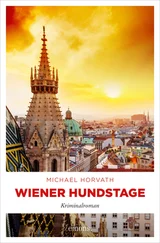First, he holds his wife tight, then he slogs outside to survey the damage in the plot. What he sees is catastrophe. Most of the red oak has uprooted. The red maple has either bent or snapped, plainly crushed under the falling oak or pine. The paper birch is almost all uprooted, bark strewn about like the papers of a raided library. Sweet and yellow birch, decapitated. The fallen logs lie like corpses to the northwest, where the wind came fiercest. Schöner can smell the lingering salt air of the ocean even though they’re nowhere near it; it must be in the soil now, glacial till heavy with days of rain. As he curses the storm, then, he doesn’t know whether to wave his finger up at the sky or down below, and so he does both. Knees sinking in the muck, he hears Heidegger, taunting, rejoicing in the destruction, the closing words of the rectoral speech: “‘All that is great stands in the storm.’”
The storm, though, is forgotten almost as quickly as it came hell-bent through. The next day, Chamberlain meets with Hitler to negotiate over Czechoslovakia. Soon, Hitler will invade the Sudentland in spite of this meeting, and a couple of months later, the world will awaken to the news that Germany has invaded Poland.

In the following year, the wood begins slowly, almost imperceptibly, to regenerate, forming a low, tightly packed canopy. The temptation is to clear the land, to try to get money for the logs, but 275 million trees have been felled in New England, enough to build 200,000 five-room houses. Market value goes kaput. Many of the trees have been too damaged to serve as wood anyway, and are only worthy to pulp. He convinces Sara that they ought not to try to clear the land, but allow it to be what it is, to become what it will become. He wanders the plot, hoisting himself over the many pits and mounds that have been formed by the felled trees, heaving himself over the downed wood.
For a year, he watches the red oak as it survives, but then passes away. The pine and the bit of hemlock are also down for the count. But then he notes as sweet birch, a novelty for him, clings to mounds and even to exposed rocks. Snapping the stems to release the soothing wintergreen, he admires its hardiness. And where mineral soil has been exposed in the mounds, of all things, paper birch begins to grow.
The fecundity of the plot and the number of species that survive amaze him. Working on the yards of the well-to-do, most of which were cleared of wood afterward, he cannot help but marvel at the greater richness and diversity on his own land, and the number of ways that it has managed to regenerate itself — through crown releafing and sprouting, seedlings and saplings alike.
But even more wondrous to him is the presence of new species entirely in the understory. They have sprung out of the pits and mounds as though they were just waiting for a storm to usher them in. One day, he discovers the Epilobium sp., whose stem will eventually turn red and offer up a white flower. A library visit reveals that this is common in Finland, close enough to Germany to make him tremble. On another occasion, he stumbles onto blackberry plants. And best of all is the common cinquefoil, the glorious yellow flower he decides he’ll pin in Sara’s hair. He crouches with the guidebook near the ground before picking one, squinting and rubbing for the slight serration that will distinguish it from imposter weeds.
The day he plucks that flower, he decides to write Heidegger. He is short but direct. He knows the chances of his words reaching Heidegger are minuscule. Nevertheless, he writes, wishing he and his wife well, asking where he now stands. He knows from some other Freiburg transplants with whom he corresponds that Heidegger resigned the Rectorate fairly swiftly in disillusionment, and has become seen as rather inconvenient to the Nazi cause at best.
In his letter, he includes a postscript describing the recent gems that he’s turned up on the floor of his forest. He writes, “You know, Martin, it’s strange. Trees have always defined the forest for me. I climbed in the canopy, because I thought that’s where the best, truest view was. But in the wake of the Storm of 1938, I find that the little plants of the understory have become very dear to me, dearer than I could have ever imagined. I will not burden you with their Latin names, but I do urge you to take notice of them the next time you are out walking in the woods. Humbly, Schöner.”

As the years and even decades go by, Schöner watches as the species composition in the forest changes radically. In 1948, pin cherry has shot up from impetuous seedlings, and red maple, white ash, and red oak, sprouted from stumps, rule the upper canopy. He sometimes thinks that if he looks hard enough, he will see the pin cherry grow another millimeter before his eyes. When he’s not out in the woods, Schöner manages to keep in touch with his American Freiburg colleagues, many of whom have gone on to venerable careers, some returning to Germany after the war, others staying on, or returning elsewhere in Europe. Their numbers include Nobel Prize winners. As for Heidegger, Schöner learns that he has fallen on grave difficulties after the war, forced to defend himself for his apparent embrace of the Nazi program. His library, it is rumored, has been confiscated. Schöner pictures troops thumbing through the tree guide, seeing his handwriting. Again, with this image in his mind, he writes to Heidegger, but again he hears nothing.

Schöner drives to Boston for a copy of the May 31, 1976 issue of Der Spiegel . Heidegger has famously given an interview, to be published only upon his death. Its publication means, of course, that Heidegger has died. But it is as if he is still alive for the duration of time that it will take Schöner to read this interview.
He drives with the magazine on the front passenger seat all the way back from Boston to Peterborough, where he will walk out onto his property to read. It is only appropriate that his last conversation with Heidegger take place in the woods. By now, the pin cherry is gone. Gray birch has come and gone into decline, still here but weakened and prematurely aged.
Hemlock, dark latecomer, looks as though it means to stay forever, claiming even the floor with its dry red-brown needles. He can see, too, the trees from 1938 pointing northwest, even greatly decayed. Still, he finds a log firm enough to plant himself on as he reads through the article.
What does he hope to find? A personal apology? An admission that he, Heidegger, has wrestled in private with the facts of the matter of the Holocaust for the past thirty years? Has agonized over them? That he made a mistake? A grave mistake, one worthy of a dunderhead rather than what Schöner is certain is one of the most astute minds of the twentieth century?
If he expects any of these things, Schöner is disappointed. Heidegger explains his “brush” with Nazism. Or explains it away. Or attempts to.
On the rest, he is silent.
When Schöner sees the symbol at the foot of the column that marks the end of the story, sees that Heidegger has only a few words left, too few for what he must do, Schöner shuts the magazine.

Now, as he hangs on the walker and looks at the plot, untouched for over fifty years, he hears the Subaru sputter and the spitting of gravel that means they are pulling up the driveway to the house. It seemed long when he first moved here, because it was longer than any driveway he’d seen before, but by now he is used to it. In less than a minute they will be here. Soon they will be showering him with bundt cake, or framed pictures of grandchildren in formal attire. Beneath all this will be their agenda: to convince him to clear the forest, to make way for the future. He wishes he could explain to them why he can’t allow this to happen, what the forest means to him intact. But at times like these, he feels like he can almost understand why Heidegger stayed silent right up to the end, why he found it so difficult to speak of a past in which he’d been at once king and fool. And he suspects that even now, he won’t be able to say it, won’t be able to name all those left behind — Lechenmeir, Schott, Fiedler, Tannenbaum, Kindler, Schöner, Schöner — parents, friends, uncles, aunts, students, teachers. Nor will he be able to articulate how this plot preserves them, how in it they preserve themselves, having risen up from the leveled earth like resurrected beings from the fallen heaps and mounds, risen in every conceivable way as none other than themselves.
Читать дальше













